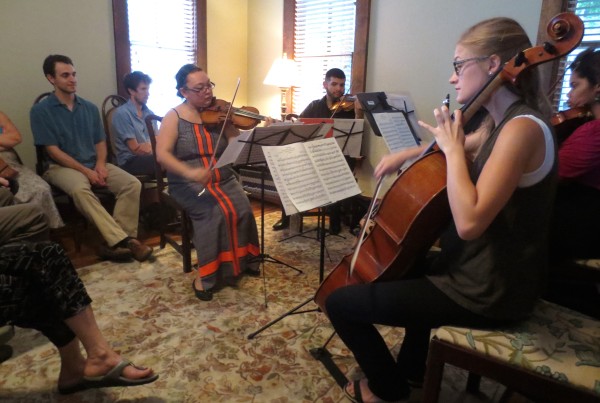A divided Supreme Court ruled Monday that states can continue using a controversial drug called Midazolam in lethal injections.
The 5-4 ruling shot down plaintiffs’ argument that using Midazolam during lethal injections broke the Eighth Amendment’s ban on cruel and unusual punishment.
Midazolam is a sedative that induces sleepiness and relaxation — the first of three drugs used during lethal injection procedures. In the Supreme Court case, death row inmates from an Oklahoma prison argued that Midazolam doesn’t induce coma as reliably as Pentobarbital, the drug traditionally used in lethal injections. States have turned to using Midazolam because supplies of Pentobarbitol have dried up in recent years amid protests over the death penalty.
Richard Deiter is the Senior Program Director for the Death Penalty Information Center, a non-profit organization that focuses on providing the public and press with information related to capital punishment. Deiter says that although the Supreme Court decision is a setback for opponents of the death penalty, it might not be the end of the debate over Midazolam.
Midazolam is supposed to create “a deep coma-like experience,” as Deiter put it. But he says “it doesn’t do that. It’s meant … to calm the patient in hospitals settings, not to completely knock them out.”
And that was essentially the argument before the Supreme Court: Inmates are not necessarily conscious when the painful second and third drugs are administered.
“There were three executions in 2014 using this drug Madazolam which took a minimum of 45 minutes,” Deiter says. “In Arizona took two hours, in Oklahoma the inmate didn’t even die from the use of the drugs… The inmate later died after being punctured and in pain and talking back, clearly not unconscious.”
Deiter clarified that the Supreme Court justices did not rule that Midazolam necessarily violates the 8th Amendment prohibition of cruel and unusual punishment. “This was a request for a stay of execution, a preliminary injunction to stop Oklahoma from going forward,” he says. “And so that’s sort of an emergency kind of appeal, it’s not your regular death penalty appeals.”
Deiter says the plaintiffs could have won the case if they proved to the court “that there would be drastic consequences” if they didn’t win the appeal. Unfortunately for them, the opponents of Midazolam in this case didn’t “knock it out of the park.” They failed to convince the justices that their case was that strong. “You have shown some problems, but not demonstrated a risk of severe pain.”
More importantly, Deiter says, the plaintiffs “have not presented an alternative that Oklahoma could use that would make things better.” With no other alternatives, the Supreme Court justices decided to keep things as they are.
But Deiter’s clear that even though this particular Supreme Court case is shut and close, this isn’t the end of the debate over the safety of Midazolam. This week’s ruling “is not a blue ribbon for Midazolam,” he says.

















